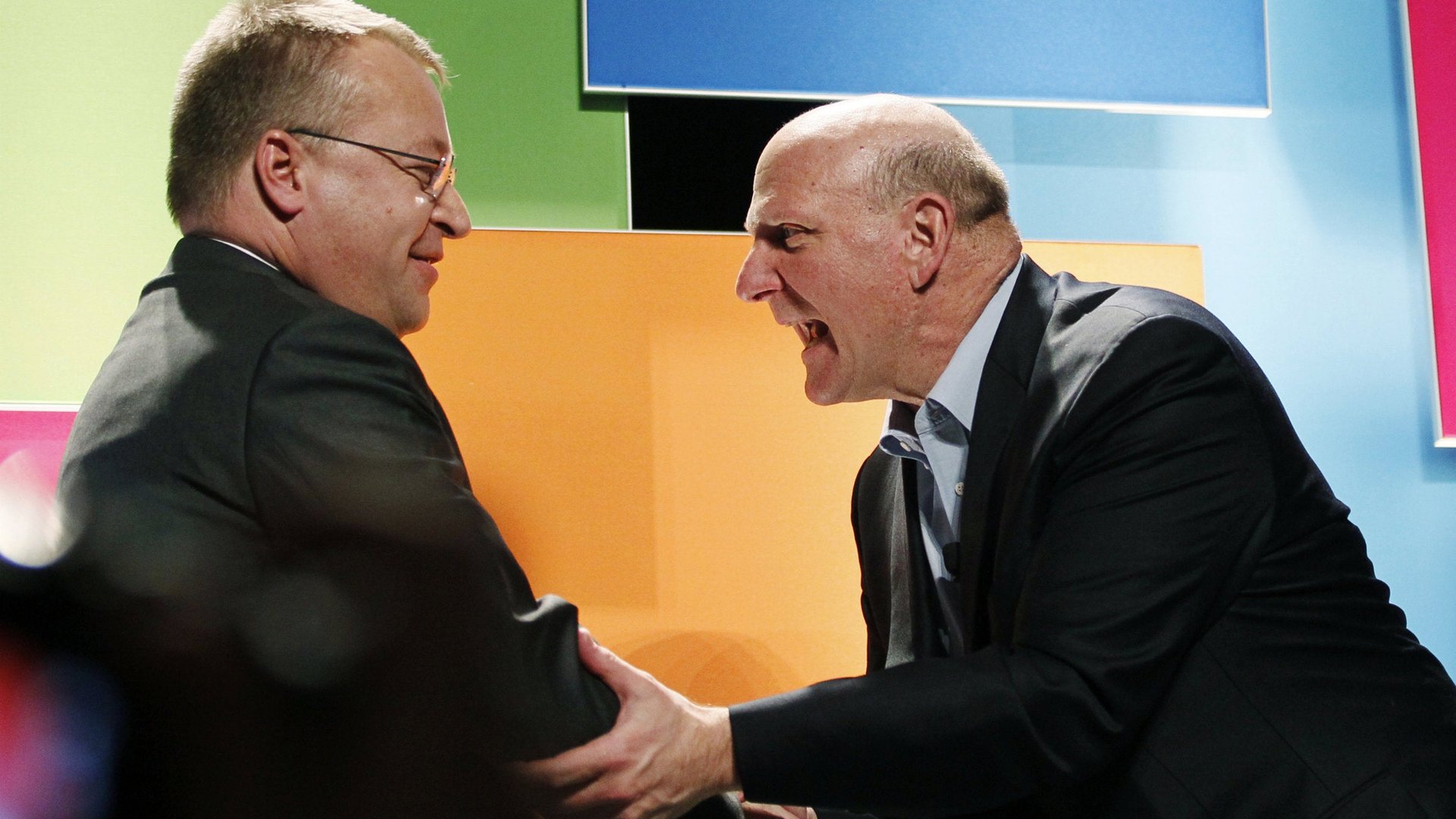Nokia ran out of moves—but now Microsoft can make some of its own
Nokia was once the 800 lb. gorilla of the mobile phone business. But as Quartz’s Christopher Mims wrote in July, the firm got left behind in the transition to smartphones, and simply had no viable options other than selling its handset business to Microsoft, in a $7.2 billion deal announced late on Monday night:


Nokia was once the 800 lb. gorilla of the mobile phone business. But as Quartz’s Christopher Mims wrote in July, the firm got left behind in the transition to smartphones, and simply had no viable options other than selling its handset business to Microsoft, in a $7.2 billion deal announced late on Monday night:
1. Nokia’s experiment with Microsoft was failing. Despite positive reviews, market share for Windows Phone 8, the version that runs on Nokia’s handsets, is even lower than Windows Phone 7, a completely different and arguably much weaker operating system.
2. Nokia’s pseudo-smartphones like the Asha phone in India are losing to cheap Android competitors. Market share for Nokia’s Symbian OS, which powers its low-end “smartphones,” was 17.4% to Android’s 56.4% in India at the beginning of 2013; since then Android has captured almost all new Indian smartphone sales.
3. Nokia is still selling tons of feature phones (i.e. not smartphones) but the margins are slim. A decade of refinement means that Nokia can sell a phone for $20, but its profits are razor thin.
4. The acquisition of Siemens’ half of Nokia Siemens Network, a vendor of enterprise equipment for telecom companies, was Nokia’s only bright spot. The substantial price for NSN, $2.2 billion, reflects the health of the underlying business.
Nokia might have had no choices left, but now Microsoft has several: First and foremost, it can kill off the shrinking and fragmented low-end Nokia phones and focus on the Windows phones, which are actually quite good.
Running the show will be current Nokia CEO and ex-Microsoft executive Stephen Elop, who is taking charge of the Microsoft Devices and Studios unit, which includes the XBox, the Surface computer, and now the Nokia handset business. Even before today’s announcement, Elop was the oddsmaker’s favorite to succeed Microsoft boss Steve Ballmer. Now that he’s back in the fold in Redmond, those odds will improve considerably.